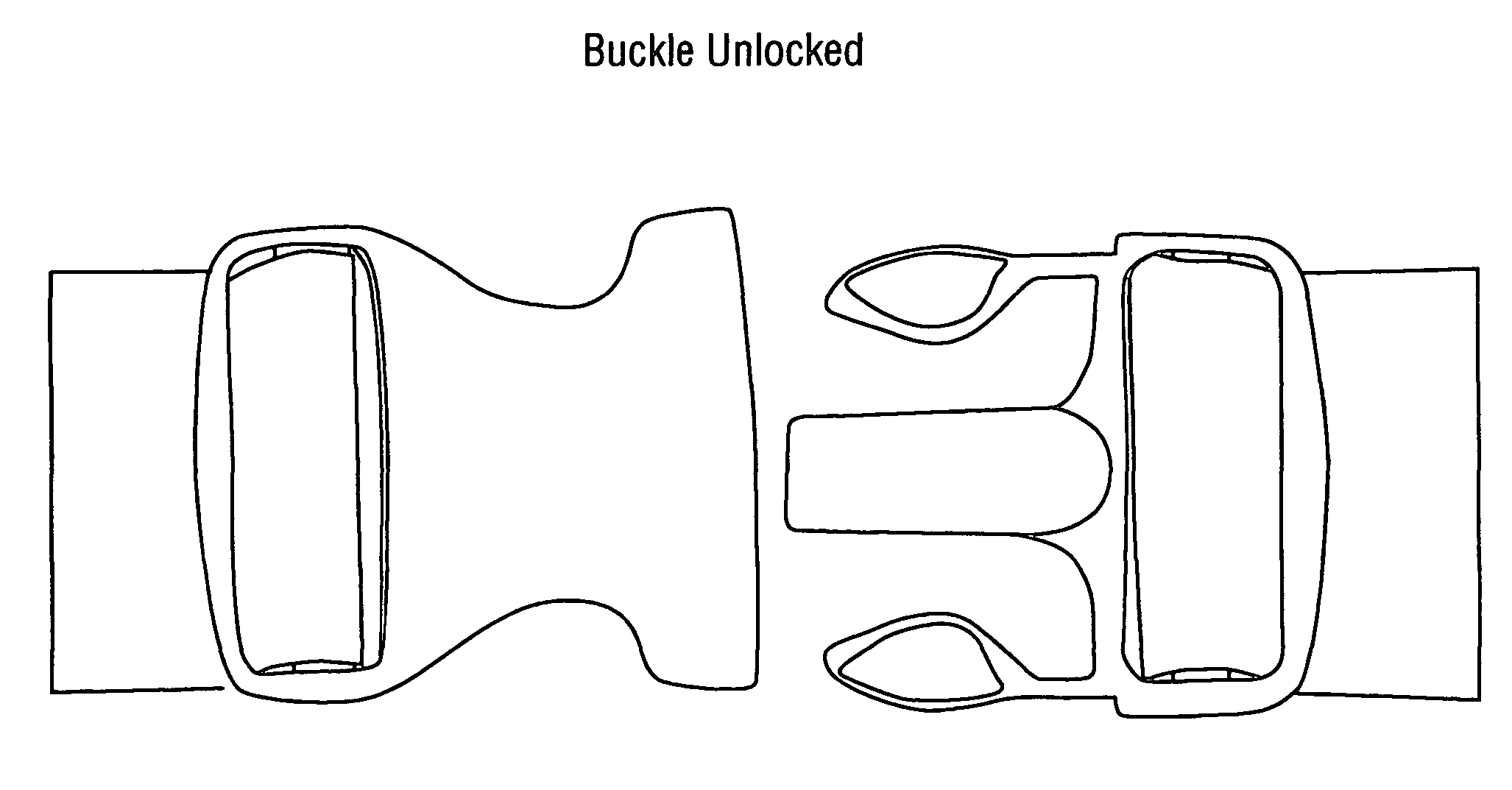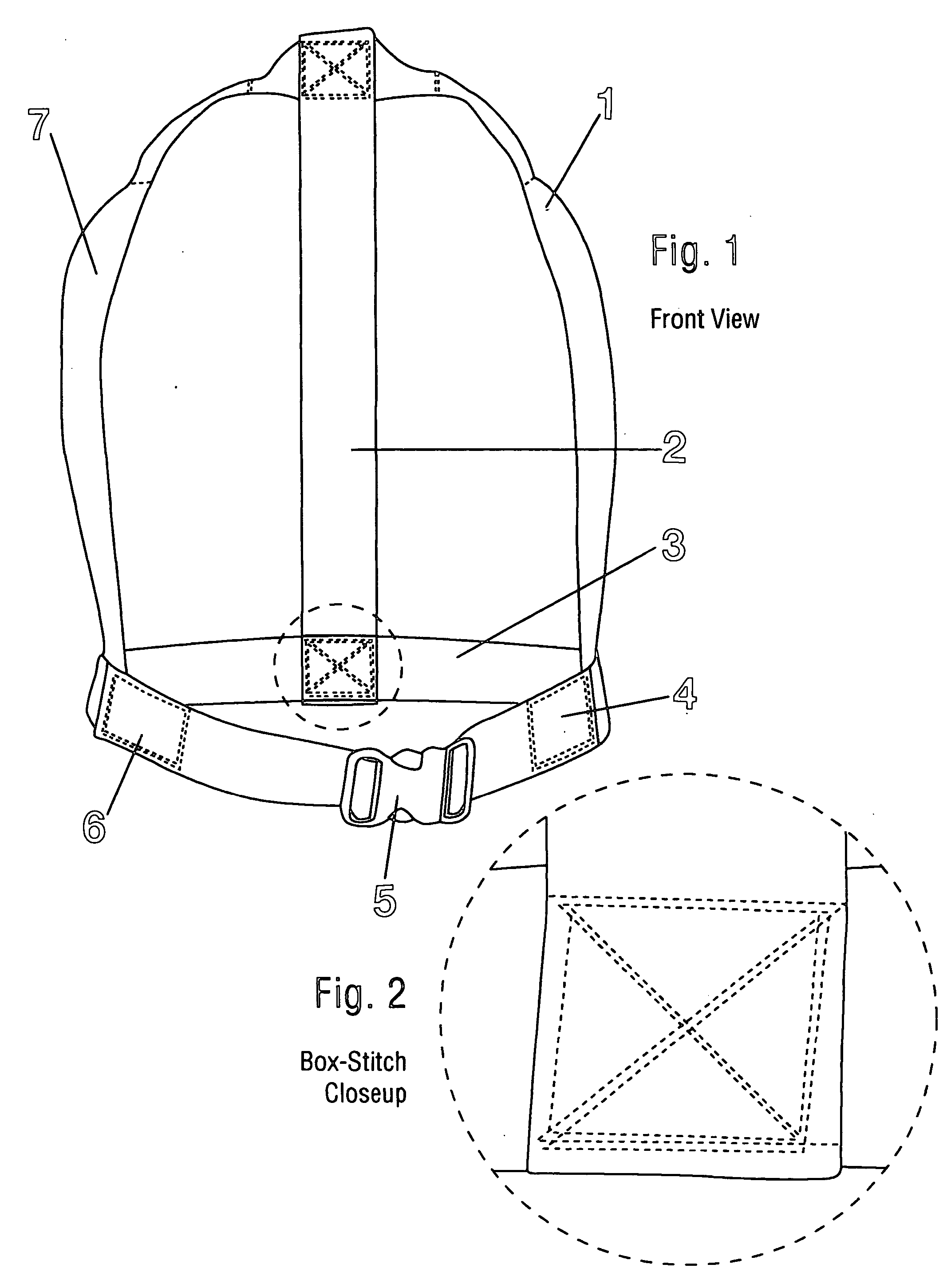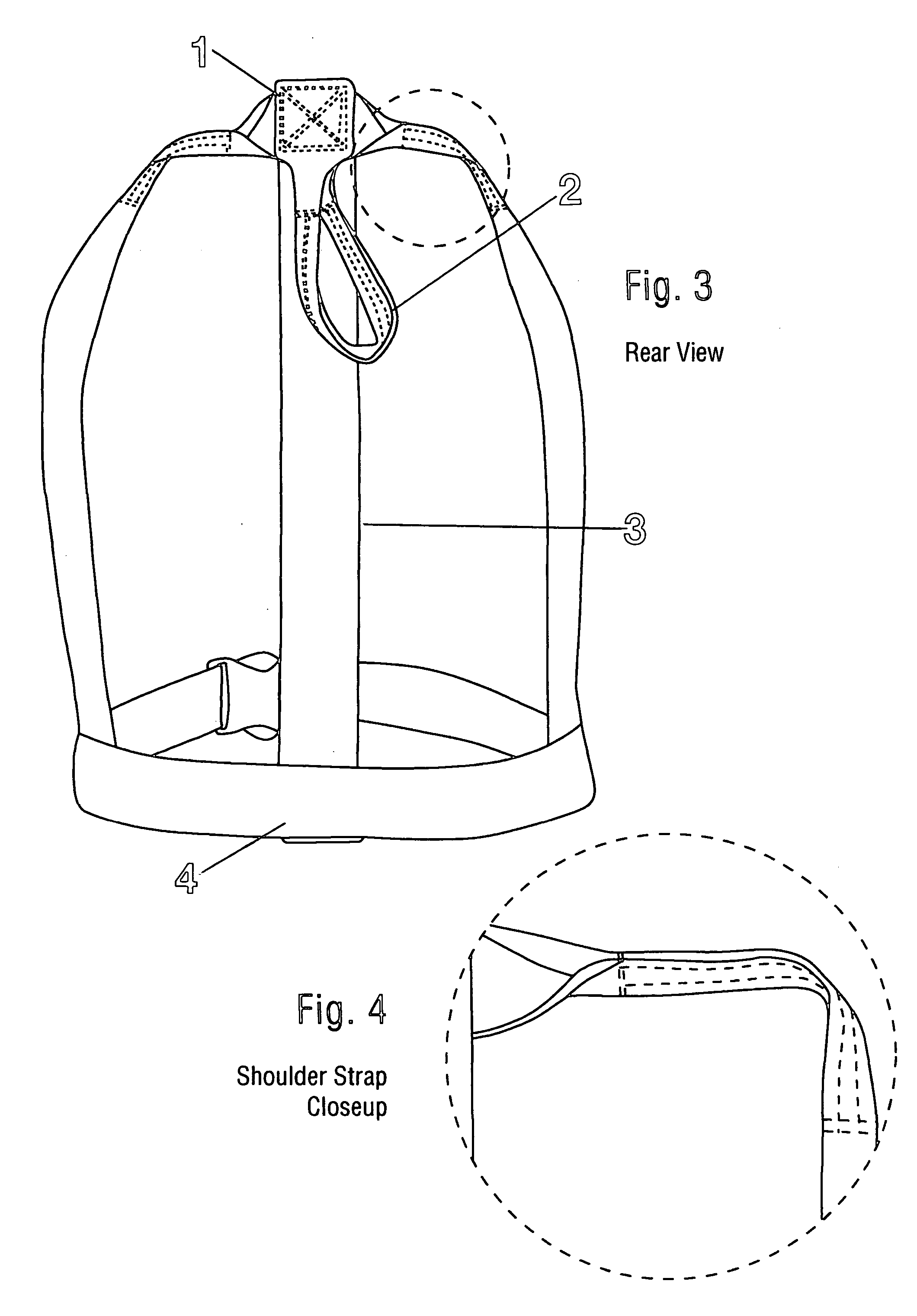Draggin' rescue device
a rescue device and dragging technology, applied in the field of safety and rescue, can solve the problems of increasing increasing the risk of rescuers being exposed to the threat of their own bodily harm for a longer period of time, and reducing so as to speed up the process and reduce the number of people required
- Summary
- Abstract
- Description
- Claims
- Application Information
AI Technical Summary
Benefits of technology
Problems solved by technology
Method used
Image
Examples
Embodiment Construction
[0021] The Draggin' Rescue Device (DRD) will be better understood when consideration is given to the following descriptions in correlation to the drawings provided:
[0022]FIG. 1 Front View #1 is the left shoulder strap and FIG. 1 Front View #7 is the right shoulder strap. The straps are actually made from one continuous piece of webbing that is attached at the bottom to the waist strap (FIG. 1 Front View #3) and at the top to the back strap (FIG. 1 Front View #2). The DRD is donned like a coat, which means there are two straps in the front (FIG. 1 Front View #1&7) and one single strap that located in the middle of the wearers back (FIG. 1 Front View #2). The back strap (FIG. 1 Front View #2) of the DRD is connected at the bottom to the waist strap (FIG. 1 Front View #3) and at the top to the shoulder straps (FIG. 1 Front View #1, 7). On the waist strap you will find the buckle used to secure the DRD to the wearer (FIG. 1 Front View #5). Once the DRD is on the wearer and the waist st...
PUM
 Login to View More
Login to View More Abstract
Description
Claims
Application Information
 Login to View More
Login to View More - R&D
- Intellectual Property
- Life Sciences
- Materials
- Tech Scout
- Unparalleled Data Quality
- Higher Quality Content
- 60% Fewer Hallucinations
Browse by: Latest US Patents, China's latest patents, Technical Efficacy Thesaurus, Application Domain, Technology Topic, Popular Technical Reports.
© 2025 PatSnap. All rights reserved.Legal|Privacy policy|Modern Slavery Act Transparency Statement|Sitemap|About US| Contact US: help@patsnap.com



